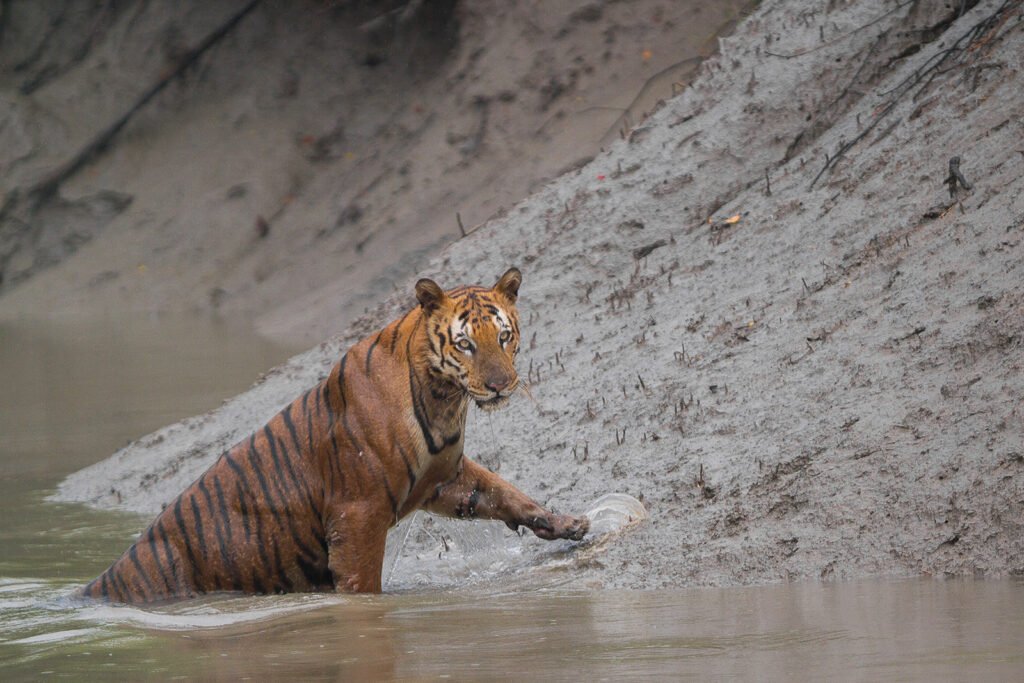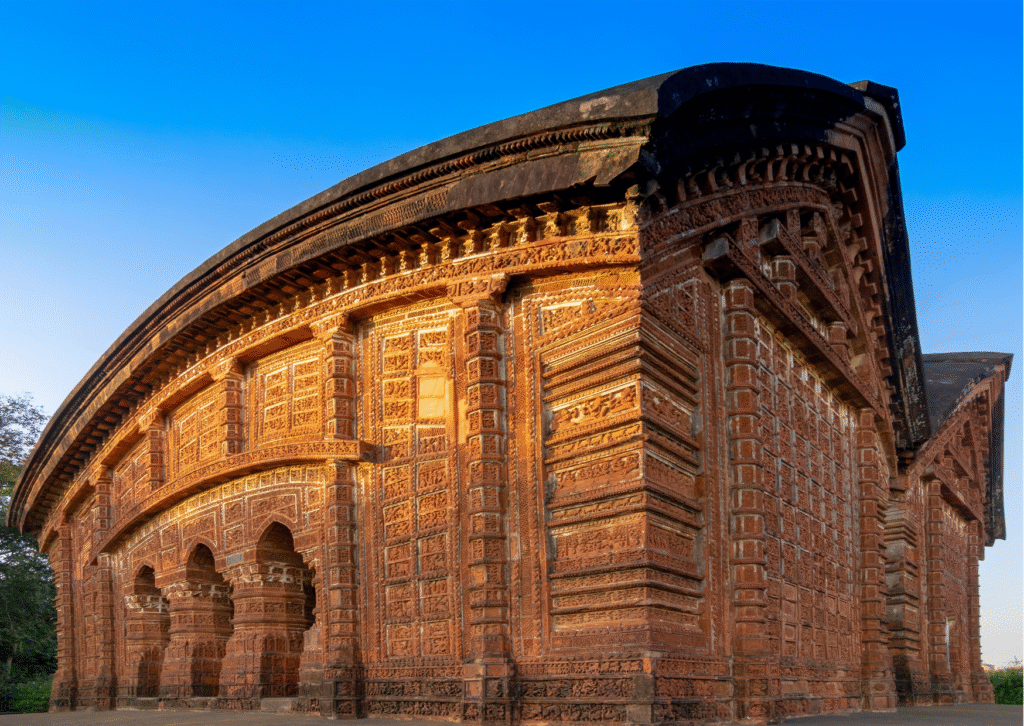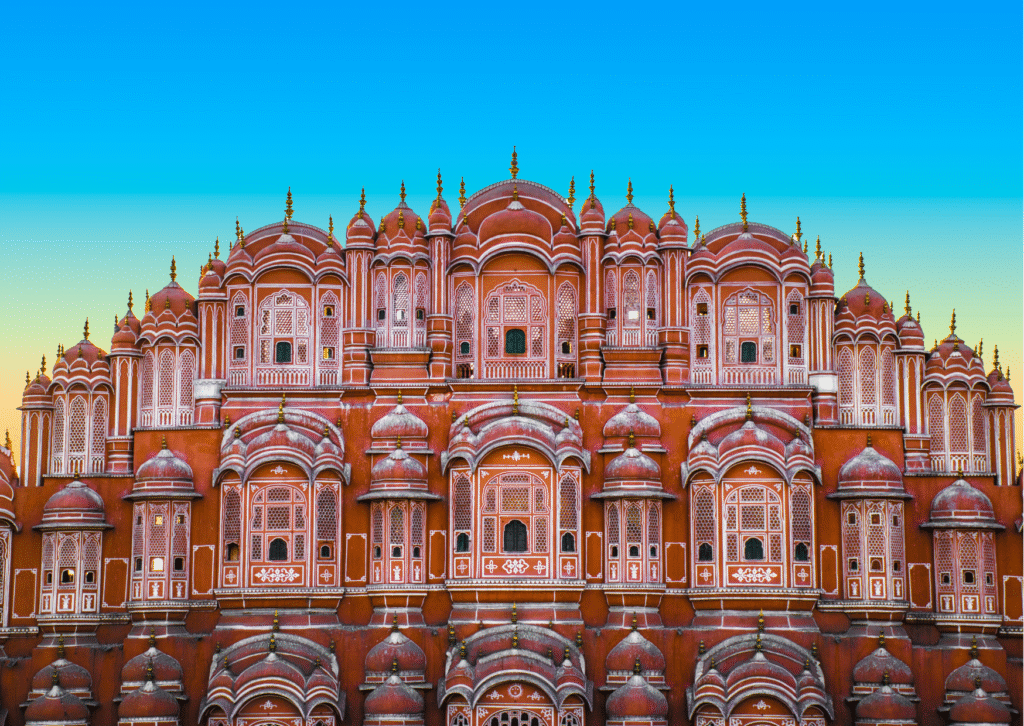
The Wild Heart: Seeking the Majestic Royal Bengal Tiger
While India’s cultural heritage is monumental, its natural heritage is equally profound. And no creature captures the wild spirit of India quite like the Royal Bengal Tiger (Panthera tigris tigris). This majestic apex predator, with its iconic striped coat and powerful presence, is a symbol of India’s incredible biodiversity and the ongoing struggle for conservation.
Seeing a tiger in its natural habitat is an electrifying, unforgettable experience. It requires patience, luck, and a journey into some of India’s most beautiful and protected wilderness areas – its national parks and tiger reserves. Many of these parks are part of ‘Project Tiger,’ a conservation program launched in 1973 to protect the species and its habitat.
Our journey connects seamlessly from Rajasthan’s royal forts to one of India’s most famous tiger territories:

Ranthambore National Park, Rajasthan: What makes Ranthambore unique is the dramatic backdrop. Tigers roam freely amidst ancient ruins, including the Ranthambore Fort (part of the UNESCO Hill Forts site) that stands within the park boundaries. The landscape is a mix of dry deciduous forests, open grassy meadows, rocky outcrops, and serene lakes often dotted with crocodiles. Safaris here, usually in open-topped jeeps (Gypsys) or larger Canters, offer a thrilling chance to spot not just tigers, but also leopards, sloth bears, sambar deer, spotted deer (chital), nilgai (blue bull), wild boar, and a rich variety of birdlife. The possibility of photographing a tiger resting near a centuries-old temple ruin or walking past the ramparts of the fort is a truly iconic Indian wildlife moment.
While Ranthambore offers a convenient link from our Rajasthan exploration, India boasts other critical tiger habitats, some with UNESCO recognition for their natural value:

Sundarbans National Park, West Bengal: This UNESCO World Heritage Site is a world apart. It’s the largest mangrove forest on Earth, a complex delta system where the Ganges, Brahmaputra, and Meghna rivers meet the Bay of Bengal. The tigers here are adapted to an amphibious life, known to swim across creeks and channels. Spotting them is challenging due to the dense foliage and watery terrain – safaris are conducted by boat. The Sundarbans represents a unique, fragile ecosystem, vital for biodiversity and as a natural barrier against coastal storms. Its UNESCO status highlights its exceptional natural importance.

Other Premier Tiger Reserves: Parks like Corbett National Park (India’s oldest), Kanha National Park (inspiration for Kipling’s “The Jungle Book”), Bandhavgarh National Park (known for high tiger density), Pench, Tadoba, and Kaziranga (also a UNESCO site, famous for rhinos but also harbouring tigers) offer diverse landscapes and significant tiger populations across different parts of India.
Embarking on a tiger safari is more than just wildlife spotting. It’s about immersing yourself in the rhythms of the jungle – listening to the alarm calls of deer or monkeys that often signal a predator’s presence, tracking pugmarks in the dust, feeling the anticipation build, and respecting the wildness of these magnificent animals. Responsible tourism is key, ensuring that visits support conservation efforts and minimize disturbance to the wildlife.
Connecting the Threads: A Journey Through India’s Enduring Legacy
From the Mughal emperor’s declaration of love set in stone, through the formidable forts guarding Rajput kingdoms, to the silent, powerful stride of the tiger in its jungle domain – this journey touches upon the very essence of India’s heritage. The Taj Mahal represents artistic perfection and deep emotion. Rajasthan’s forts and palaces embody history, power, and enduring cultural traditions. The tiger symbolizes the raw, untamed beauty of India’s natural world and the critical need for its preservation.
These elements – UNESCO World Heritage Sites, aristocratic legacies, and precious wildlife – are not isolated fragments. They are interwoven threads in the vast, intricate tapestry that is India. They remind us of the empires that rose and fell, the artistic heights achieved, the human spirit’s resilience, and the delicate balance of nature.
To travel through India, exploring these sites and seeking these experiences, is to engage with a living history and a vibrant present. It’s a journey that challenges, inspires, and ultimately leaves an indelible mark on the soul. Whether marveling at the ethereal glow of the Taj Mahal at dawn, standing atop the ancient walls of Kumbhalgarh, or holding your breath as a Royal Bengal Tiger emerges from the forest cover, you are connecting with a legacy that is both profoundly Indian and universally significant. This is the magic of India – a timeless land inviting exploration, promising wonder, and demanding preservation for



